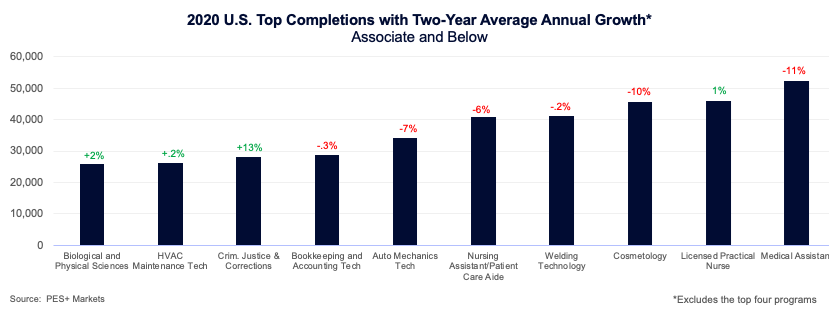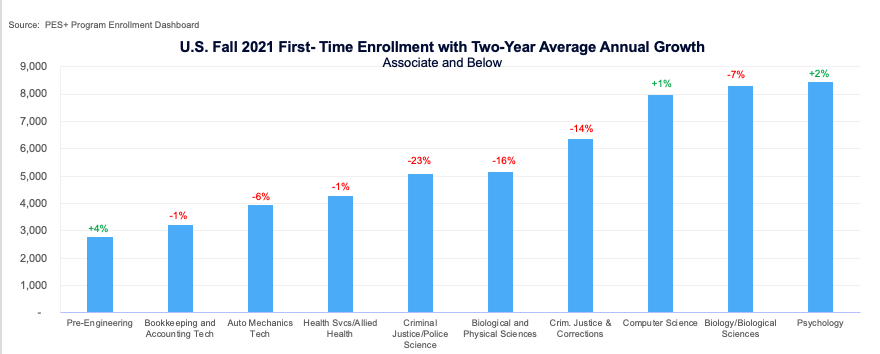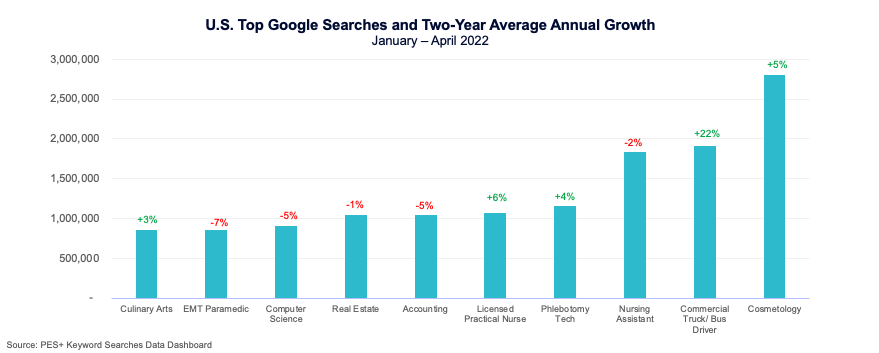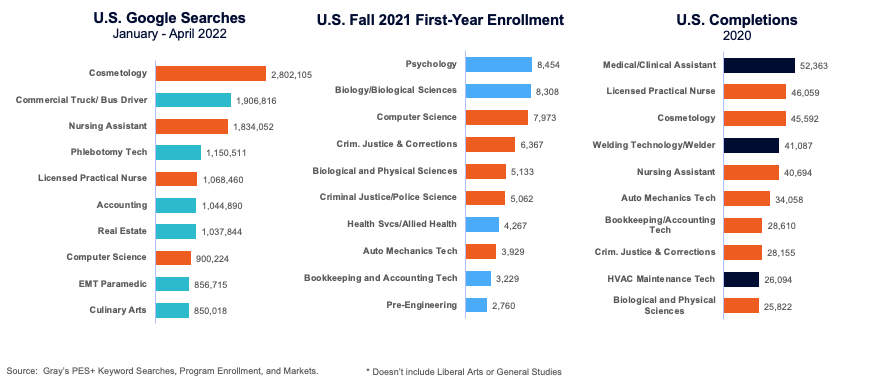The Correct Data Sources to Evaluate Program Enrollment
Enrollment is only one student demand metric you need to evaluate your program portfolio. Low completion rates are harmful to institutional finances and students. Gray pulled the top ten associate program completions from IPEDS data to see what students completed in 2020. We excluded Liberal Arts, General Studies, Business, and Registered Nursing since those consistently top the list.

There are limitations in relying solely on IPEDS to evaluate programs. As of spring 2022, the most recent update was for 2020 completions. Even more importantly, students selected these associate programs at least one year prior, in 2019 – before the pandemic.
National Student Clearinghouse enrollment data is more current. We looked at the Fall 2021 enrollment of new students.

There is some overlap between Fall 2021 first-time enrollment and 2020 completions: Biological/ Physical Sciences, Criminal Justice and Corrections, Bookkeeping/Accounting Tech, and Auto Mechanic Tech are in the top 10 for both metrics. That overlap provides more information to measure market demand.
Growth metrics are also key. Medical Assistant, the top program in completions volume, had the highest decline in annual growth at 11 percent. It’s also not in the top program enrollments.
Google Keyword searches are the most up-to-date and can tell us what students are looking for now. Cosmetology consistently has the highest search volumes. Commercial Truck and Bus Driver has grown 22% year-over-year from January to April; however, it is not strong in enrollment or completions. The current spike in growth may be related to existing supply chain issues and employer demand.

Multiple Data Sources Reveal the Whole Story

What happens when we use all three metrics instead of one?

The orange bars signify there is some overlap in metrics for that program. The rest only appear in one metric. What can we conclude by looking at associate programs across all three metrics instead of just one?
The chart shows that students are searching for Computer Science programs and enrolling in them, but these students are completing at a lower rate. Licensed Practical Nurse and Nursing Assistant have high Google search volumes and are strong in completions, although Nursing Assistant has declined in growth.
Licensed Practical Nurse has a strong and growing Google search volume in 2022. It’s also growing in completions. Bookkeeping/Accounting Tech is strong in enrollment and completions, and Accounting is strong in searches. Auto Mechanics Tech decreased growth in enrollment and completions.
The bottom line: If you are using a single data source to review your academic program enrollment, you are not getting the whole picture and could be missing out on several opportunities.




